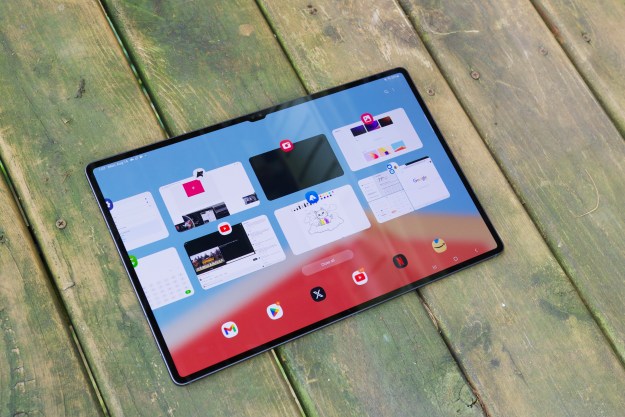
The trends have been crystal clear. People love phone screens – the bigger the better. The bigger phones seem to get, the more they seem to sell. And because of that, my phone choices are getting absurdly large.
Dell was mocked and heralded as crazy for bringing out a 5-inch phone back in 2010. The Dell Streak was laughed out of existence. But take a look at the major phones announced in the last few months, from the Droid DNA in November 2012 to the many new flagship designs shown at CES in January. Just when you thought standard phones had peaked with 4.7-inch screens, everything upshifted to 5 inches. And to make matters worse, the massive Galaxy Note 2 – once huge at 5.5 inches – was dwarfed by the Huawei Ascend Mate, which stands at 6.1 inches. It’s so large it makes me wonder whether 7-inch tablets will soon be considered phones themselves.

The HTC Mini is an admission that the Droid DNA, and other phones with 5+ inch screens are just too big for many people to use comfortably every day. It’s also one of the most obvious examples of our tendency to use technology to solve the problems we’ve created with technology. Instead of simply buying a phone you can comfortably hold, some people are opting to give up one-handed phone use in favor of giant screens.
Thankfully, I may not have to wake up in a cold sweat much longer, and you may not be forced to buy a mini phone so you can actually use your phone as … a phone. For the first time in years, smartphone screen sizes are showing slight signs of shrinkage. At Mobile World Congress, a few of the hottest new phones have lost some heft. The HTC One, first shown last week, reverses the Droid DNA’s 5-inch screen and opts for a 4.7-inch screen like the HTC One X. Huawei’s new Ascend P2 does the same, falling back from the 5-inch screen of the Ascend D2 to a more manageable 4.7 inches. New Lumia devices from Nokia and the BlackBerry Z10 also stay in the 4- to 4.7-inch range. And lets not forget the Motorola Droid Razr M, my favorite little Verizon handset.
Now, there are some of you who may argue this point. After all, ZTE just announced the ZTE Grand Memo and LG showed off the rather husky Optimus G Pro and Vu 2 at MWC today. And indeed, big phones are alive and well; the difference is now in choice. Most every major manufacturer seems determined to compete with Samsung’s Galaxy Note line, and they’ve all adopted the same strategy. Instead of continuing to make their flagship, high-end phones ever-more-dangerously larger, almost every big phone maker now has two flagship phones: a big one (Galaxy S3) and a huge one (Galaxy Note 2). People with basketball-sized hands can now live side by side with us normal folk. Assuming things stay like this, I’m cool.
Want a huge-ass phone? Go for it. Buy yourself a phone that could be used as a blast shield for your face. For the first time, I don’t care. I’ll buy a phone that fits in my hand. Giant phones and I can finally be friends, or, at least, frenemies. I’d never insult a Galaxy Note 2 to its face; I’d get my ass kicked. That guy’s huge.



